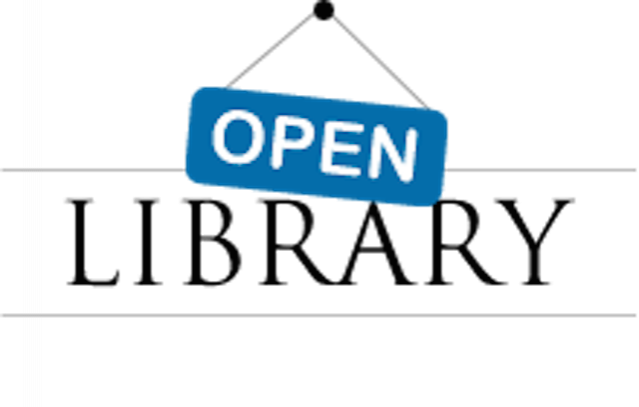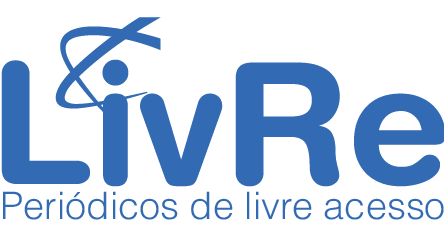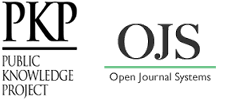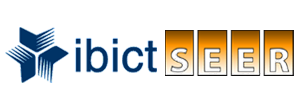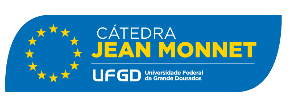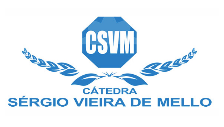Institutional protection of rights and characterological profile of adolescents involved in sexual abusive practices
DOI:
https://doi.org/10.30612/videre.v16i35.18117Keywords:
Human rights, Institutional protection of rights, tertiary victimization, abusive sexual practicesAbstract
The objective of this investigation is to understand the legal-protective situation and the characterological profile of adolescents, from the region of Los Lagos (Chile), who entered Specialized Intervention Programs for Children and Adolescents (PAS), an area of protection of children's rights, from 2020 to 2022, quarantined and post due to COVID19. It has an analytical-explanatory and non-experimental quantitative approach, based on the analysis of documentary information of primary sources: individual carpets and records of the Early Childhood Service. We seek to understand this phenomenon, from the perspective of human rights and tertiary victimization, using multifactorial logistic regression analysis with SPSS®-21.0. The results reveal a significant number of adolescents served and significant correlations between the duration of participation in the protection system, family structure, development stage, gender and academic vulnerability of the young people involved. There is a coinciding characterological and legal protection trend among adolescents hospitalized in the PAS modality.
Downloads
References
ALARCÓN, P. A.; PÉREZ-LUCO, R. X.; WENGER, L. S.; SALVO, S. I.; CHESTA. S. A. Personalidad y gravedad delictiva en adolescentes con conducta antisocial persistente. Revista Iberoamericana de Psicología y Salud, 9(1), 58-74. 2018. Disponível em: https://doi.org/10.23923/j.rips.2018.01.015. Acesso em 12 set. 2023
ALARCÓN PARCO, D.; BÁRRIG JÓ, P. S.. Conductas internalizantes y externalizantes en adolescentes. Liberabit, 21(2), 253-259. 2015. Disponível em: http://www.scielo.org.pe/scielo.php?script=sci_arttext&pid=S1729-48272015000200008&lng=es&tlng=es. Acesso em 12 set. 2023
BARRA, S.; BESSLER, C.; LANDOLT, M. A.; AEBI, M.. Patterns of Adverse Childhood Experiences in Juveniles Who Sexually Offended. Sexual Abuse, 30(7), 803–827. 2018. Disponível em: https://doi.org/10.1177/1079063217697135. Acesso em 12 set. 2023
BENEDICTO, C.; RONCERO, D.; GONZÁLEZ, L.. Agresores sexuales juveniles: tipología y perfil psicosocial en función de la edad de sus víctimas. Anuario de Psicología Jurídica, 27(2017), 33–42. 2016.
BROWN, A.. Using Latent Class Analysis to Explore Subtypes of Youth Who Have Committed Sexual Offenses. Youth Violence and Juvenile Justice, 17(4), 413–430. 2019. Disponível em: https://doi.org/10.1177/1541204018820578. Acesso em 12 set. 2023
BOONMANN, C.; GRISSO, T.; GUY, L.S. et al. Childhood traumatic experiences and mental health problems in sexually offending and non-sexually offending juveniles. Child Adolesc Psychiatry Ment Health, 10, 45. 2016. Disponível em: https://doi.org/10.1186/s13034-016-0127-2. Acesso em 12 set. 2023
CASAS, L.; AHUMADA C.. Teenage sexuality and rights in Chile: from denial to punishment. Reproductive Health Matters. (34) 17: 88-98. 2019.
CAVAS. Metropolitano 2011: 16 años de experiencia. Chile: Centro de asistencia a víctimas de atentados sexuales, 2011. Disponível em: https://www.bcn.cl/obtienearchivo?id=documentos/10221.1/56276/1/Libro_CAVAS.pdf. Acesso em 12 set. 2023
CHILE. Ley Nº 21.302 (2020) Crea el Servicio Nacional de Protección Especializada a la Niñez y Adolescencia y Modifica Normas Legales que Indica. Chile: Congreso Nacional, 2020. Disponível em: https://bcn.cl/2o9yx. Acesso em 12 set. 2023
COLEGIO DE PSICÓLOGOS. Código de ética. Chile: Colegio de Psicólogos, 2008.
CÓRDOBA, R. C.. La victimización secundaria en la violencia sexual: Análisis de la victimización secundaria en casos de abusos y agresiones sexuales, y sexting. EHQUIDAD. Revista Internacional de Políticas de Bienestar y Trabajo Social, (17), 179–210. 2022. Disponível em: https://doi.org/10.15257/ehquidad.2022.0007. Acesso em 12 set. 2023
DÍAZ, J.. Ofensores sexuales juveniles. Estudios de juventud, (62) 3, 93-126. 2003. Recuperado de http://www.injuve.es/sites/default/files/art9.pdf. Acesso em 12 set. 2023
FINKELHOR, D. (1980). Risk factors in the sexual victimization of children. Child Abuse & Neglect, 4, 265–273. 1980.
FINKELHOR, D., ORMROD, R., CHAFFIN, M., BULLETIN, J. J.. Juveniles who commit sex offenses against minors. In: AAVV. National Strategy for Child Exploitation Prevention and Interdiction. EEUU: Departament of Justice, 2011.
FISCALÍA DE CHILE. Boletín Estadístico Anual. Chile: Fiscalia nacional, 2019. Disponível em: http://www.fiscaliadechile.cl/Fiscalia/estadisticas/index.do. Acesso em 12 set. 2023
FISCALÍA DE CHILE. Boletín Estadístico Anual. Chile: Fiscalia nacional, 2020. Disponível em: http://www.fiscaliadechile.cl/Fiscalia/estadisticas/index.do. Acesso em 12 set. 2023
FISCALÍA DE CHILE. Boletín Estadístico Anual. Chile: Fiscalia nacional, 2021. Disponível em: http://www.fiscaliadechile.cl/Fiscalia/estadisticas/index.do. Acesso em 12 set. 2023
FISCALÍA DE CHILE. Boletín Estadístico Anual. Chile: Fiscalia nacional, 2022. Disponível em: http://www.fiscaliadechile.cl/Fiscalia/estadisticas/index.do. Acesso em 12 set. 2023
GAETE, V.. Desarrollo psicosocial del adolescente. Revista chilena de pediatría, 86(6), 436-443. 2015. Disponível em: https://dx.doi.org/10.1016/j.rchipe.2015.07.005. Acesso em 12 set. 2023
JEWKES, R, SEN, P, GARCÍA-MORENO, C.. La violencia sexual. In: OMS. Informe Mundial sobre la Violencia y la Salud. OMS: Genéve. 2003.
LATIMER W, ZUR J.. Epidemiologic trends of adolescent use of alcohol, tobacco, and other drugs. Child Adolesc Psychiatr Clin N Am. 2010 Jul;19(3):451-64. 2010. Disponível em: doi: 10.1016/j.chc.2010.03.002. PMID: 20682214; PMCID: PMC6413882. Acesso em 12 set. 2023
MEJOR NIÑEZ. Decreto 12. ONG Mejor Niñez: Chile. 2021. Disponível em: https://www.mejorninez.cl/descargas/doc-MN/Decreto-12_29-NOV-2021.pdf. Acesso em 12 set. 2023
MURPHY, W., PAGE, I. J., KUHN, T. M., MICHAEL ADLER, J., SEEMAN, L., POSEY, A. W. A.. Adolescents Who Have Engaged In Sexually Abusive Behavior. echappellTDMHSAS. ResearchTeam, 11, 309–329. 2013.
MINSAL. Norma general técnica para la atención de víctimas de violencia sexual. Ministerio de la Salud: Chile, 2016. Disponível em: https://diprece.minsal.cl/wrdprss_minsal/wp-content/uploads/2016/10/NT_VICTIMAS- VIOLENCIA-SEXUAL_web.pdf. Acesso em 12 set. 2023
OMS. La OMS caracteriza al COVID-19 como una pandemia. Paris: Organización Mundial para la Salud, 2020. Disponível em: https://www.paho.org/es/noticias/11-3-2020-oms-caracteriza-covid-19-como-pandemia. Acesso em 12 set. 2023
ONU - Naciones Unidas. Declaración y el Programa de Acción de Viena, aprobados por la Conferencia Mundial de Derechos Humanos. Viena: Naciones Unidas, 1993
ONU. Mujeres. Viena: Naciones Unidas, 2022. Disponível em: https://interactive.unwomen.org/multimedia/explainer/covid19/es/index.html?gclid=CjwKCAjw2f-VBhAsEiwAO4lNeMbSKFbCwsnf5Vvn-FOL_c7RkGzBmT8eYKLrWiePeKdjIboT8eONfRoCI7kQAvD_BwEç. Acesso em 12 set. 2023
PAPALIA, D. Desarrollo Humano. 12o Edición. McGrawHill, México. 2012.
POLICÍA DE INVESTIGACIONES DE CHILE. Nota de prensa 15/09/2021. Chile: PDI, 2022. Disponível em: https://www.pdichile.cl/centro-de-prensa/detalle-prensa/2021/09/15/en-32-aumentaron-detenciones-por-delitos-sexuales. Acesso em 12 set. 2023
PJUD. Estadísticas de causas VIF y Maltrato habitual enero 2022. Subdepartamento de Estadísticas. Chile: Poder Judicial, 2022.
RICH, P.. Understanding, Assessing, and Rehabilitating Juvenile Sexual Offenders. New Jersey, Estados Unidos: JohnWiley & Sons, Inc., 2011. Disponível em: https://books.google.cl/books?id=1gSnoFdaIDwC&lpg=PP1&dq=Understanding%2C%2 0Assessing%2C%20and%20Rehabilitating%20Juvenile%20Sexual%20Offenders&pg=P T41#v=onepage&q&f=false. Acesso em 12 set. 2023
ROMERO, F.. Guía sobre conductas sexuales problemáticas y prácticas abusivas sexuales. Chile: ONG Paicaví. 2014.
SENAME. Anuario estadístico 2017. Chile: Servicio Nacional de Menores, 2019. Disponível em: http://www.sename.cl. Acesso em 12 set. 2023
SENAME. Quienes somos. Chile: Servicio Nacional de Menores, 2019. Disponível em: http://www.sename.cl. Acesso em 12 set. 2023
SENAME. Anuario estadístico 2020. Chile: Servicio Nacional de Menores, 2020. Disponível em: http://www.sename.cl. Acesso em 12 set. 2023
SENAME. Anuario estadístico. Chile: Servicio Nacional de Menores, 2017. Disponível em: http://www.sename.cl. Acesso em 12 set. 2023
SENAME. Bases Técnicas Programa Especializado en Intervención con Adolescentes que presentan Prácticas Abusivas Sexuales (PAS). Servicio Nacional de Menores, 2015. Disponível em: http://www.sename.cl. Acesso em 12 set. 2023
UNICEF. Convención sobre los derechos del niño. New York: UNICEF, 2023. Disponível em: https://www.unicef.org/chile/los-niños-niñas-y-adolescentes-tienen-derechos#:~:text=La%20Convención%20sobre%20los%20Derechos%20del%20Niño%20busca%20promover%20en,Asamblea%20General%20de%20Naciones%20Unidas. Acesso em 12 set. 2023
VENEGAS, R.. Carreras delictivas sexuales en jóvenes con prácticas abusivas tempranas. Revista Iberoamericana Sobre Niñez y Juventud En Lucha Por Sus Derechos, 3. P. 153-162, 2012.
WEKERLE, C., BENNETT, T., FRANCIS, K. (2013). Child Sexual Abuse and Adolescent Sexuality. In: D. Bromberg, W. O’Donohue (Eds.), Handbook of Child and Adolescent Sexuality. Cambridge; Academic Press, 2013. p. 325-345. Disponível em: http://www.sciencedirect.com/science/book/9780123877598. Acesso em 12 set. 2023
Downloads
Published
How to Cite
Issue
Section
License

This work is licensed under a Creative Commons Attribution-NonCommercial-ShareAlike 3.0 Unported License.
Authors must accept the publication rules when submitting the journal, as well as agree to the following terms:
(a) The Editorial Board reserves the right to make changes to the Portuguese language in the originals to maintain the cultured standard of the language, while respecting the style of the authors.
(b) Authors retain the copyright and grant the journal the right to first publication, with the work simultaneously licensed under the Attribution-NonCommercial-ShareAlike 3.0 Brazil (CC BY-NC-SA 3.0 BR) that allows: Share - copy and redistribute the material in any medium or format and Adapt - remix, transform, and create from the material. CC BY-NC-SA 3.0 BR considers the following terms:
- Attribution - You must give the appropriate credit, provide a link to the license and indicate whether changes have been made. You must do so under any reasonable circumstances, but in no way that would suggest that the licensor supports you or your use.
- NonCommercial - You may not use the material for commercial purposes.
- Sharing - If you remix, transform, or create from material, you must distribute your contributions under the same license as the original.
- No additional restrictions - You may not apply legal terms or technological measures that legally restrict others from doing anything that the license permits.
(c) After publication, authors are allowed and encouraged to publish and distribute their work online - in institutional repositories, personal page, social network or other scientific dissemination sites, as long as the publication is not for commercial purposes.




